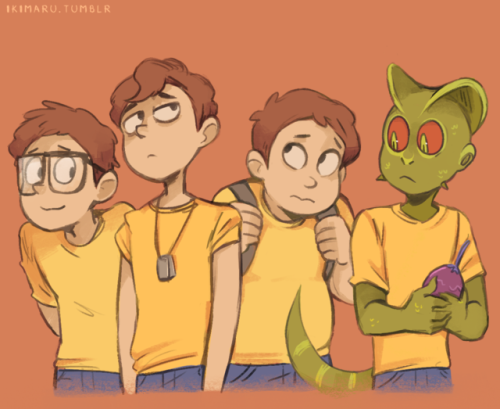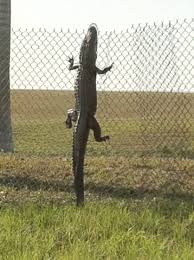This Probably Wasn’t A Good Time To Get Into This Show Sdfkjs



this probably wasn’t a good time to get into this show sdfkjs
More Posts from Ourvioletdeath and Others
Why is no one talking about what happened in São Paulo yesterday?
The sky turned completely black around three in the afternoon partly because of smoke coming from the Amazon rainforest, WHICH IS 2300 KILOMETERS AWAY FROM THE CITY, where the government has greatly increased the amount of land being burned for profit. People are getting sick, animals are dying, native territory is being lost to the flames.
This is what the sky looked like in my city yesterday, in the early afternoon.



It got so dark so fast the city had to turn on the lamp posts and night lighting.
Please talk about this. Reblog this post, non-brazilians especially.

I’m screaming
Temples are built for gods. Knowing this a farmer builds a small temple to see what kind of god turns up.
Snakes are so cute though!
Itsy Bitsy Spider: Fear of spiders and snakes is deeply embedded in us
Snakes and spiders evoke fear and disgust in many people. Even in developed countries lots of people are frightened of these animals although hardly anybody comes into contact with them. Until now, there has been debate about whether this aversion is innate or learnt. Scientists at the Max Planck Institute for Human Cognitive and Brain Sciences (MPI CBS) in Leipzig and the Uppsala University have recently discovered that it is hereditary: Babies as young as six months old feel stressed when seeing these creatures—long before they could have learnt this reaction.

Presumably, in Germany most people have never come across a poisonous spider or snake in the wild. Here in this country there are no spiders that pose a threat to humans. Likewise for snakes there are just two species that are indeed poisonous but they are so rare that you hardly ever encounter them. Nevertheless, there are few people that would not shiver at the thought of a spider crawling up their arm, however harmless it may be.
This fear can even develop into anxiety which limits a person’s daily life. Such people are always on edge and cannot enter a room before it is declared “spider free” or cannot venture out into nature for sheer fear that they may encounter a snake. In developed countries one to five per cent of the population are affected by a real phobia of these creatures.
Until now, it was not clear where this widespread aversion or anxiety stems from. While some scientists assume that we learn this fear from our surroundings when we are a child, others suppose that it is innate. The drawback of most previous studies on this topic was that they were conducted with adults or older children—making it hard to distinguish which behaviour was learnt and which was inborn. Such studies with children only tested whether they spot spiders and snakes faster than harmless animals or objects, not whether they show a direct physiological fear reaction.
Scientists at the Max Planck Institute for Human Cognitive and Brain Sciences (MPI CBS) in Leipzig and the Uppsala University, Sweden, recently made a crucial observation: Even in infants a stress reaction is evoked when they see a spider or a snake. And this already at the age of six months, when they are still very immobile and have had little opportunity to learn that these animals can be dangerous.
“When we showed pictures of a snake or a spider to the babies instead of a flower or a fish of the same size and colour, they reacted with significantly bigger pupils”, says Stefanie Hoehl, lead investigator of the underlying study and neuroscientist at MPI CBS and the University of Vienna. “In constant light conditions this change in size of the pupils is an important signal for the activation of the noradrenergic system in the brain, which is responsible for stress reactions. Accordingly, even the youngest babies seem to be stressed by these groups of animals.”
“We conclude that fear of snakes and spiders is of evolutionary origin. Similar to primates, mechanisms in our brains enable us to identify objects as ‘spider’ or 'snake’ and to react to them very fast. This obviously inherited stress reaction in turn predisposes us to learn these animals as dangerous or disgusting. When this accompanies further factors it can develop into a real fear or even phobia. "A strong panicky aversion exhibited by the parents or a genetic predisposition for a hyperactive amygdala, which is important for estimating hazards, can mean that increased attention towards these creatures becomes an anxiety disorder.”
Interestingly, it is known from other studies that babies do not associate pictures of rhinos, bears or other theoretically dangerous animals with fear. “We assume that the reason for this particular reaction upon seeing spiders and snakes is due to the coexistence of these potentially dangerous animals with humans and their ancestors for more than 40 to 60 million years—and therefore much longer than with today’s dangerous mammals. The reaction which is induced by animal groups feared from birth could have been embedded in the brain for an evolutionarily long time.
For modern risks such as knives, syringes or sockets, presumably the same is true. From an evolutionary perspective they have only existed for a short time, and there has been no time to establish reaction mechanisms in the brain from birth. "Parents know just how difficult it is to teach their children about everyday risks such as not poking their fingers into a socket”, Hoehl adds with a smile.

the sketch of this was super old but I finished coloring it for WLF for 413 ohoh
it’s up as print!
Your first name is spelled and pronounced the exact same way as an alien race’s word for death. You try to explain to the terrified aliens that you are not, in fact, the Grim Reaper.
![[Wondermark] This Is The Coolest Thing.](https://64.media.tumblr.com/dcc8c5c3fcd80758b0c8f56258a6276e/tumblr_nsq31fItlh1s8opobo1_500.png)
![[Wondermark] This Is The Coolest Thing.](https://64.media.tumblr.com/cf9df4515ef78fa875685cc46df757ae/tumblr_nsq31fItlh1s8opobo2_500.png)
![[Wondermark] This Is The Coolest Thing.](https://64.media.tumblr.com/8dfe45b33e877a8e0b418f4b1ba0084d/tumblr_nsq31fItlh1s8opobo3_500.png)
[Wondermark] this is the coolest thing.
mdlksdfsd my fave thing is when ppl outside of florida ask “how do alligators even get in ur pools??? how do they get into ur yards???”

alligators can climb fences. they do this a lot
Fucking SCIENCE

1. Lungs don’t just facilitate respiration - they also make blood. Mammalian lungs produce more than 10 million platelets (tiny blood cells) per hour, which equates to the majority of platelets circulating the body.
2. It is mathematically possible to build an actual time machine - what’s holding us back is finding materials that can physically bend the fabric of space-time.
3. Siberia has a colossal crater called the ‘doorway to the underworld’, and its permafrost is melting so fast, ancient forests are being exposed for the first time in 200,000 years.
4. The world’s first semi-synthetic organisms are living among us - scientists have given rise to new lifeforms using an expanded, six-letter genetic code.
5. Vantablack - the blackest material known to science - now comes in a handy ‘spray-on’ form and it’s the weirdest thing we’ve seen so far this year.
6. It’s official: time crystals are a new state of matter, and we now have an actual blueprint to create these “impossible” objects at will.
7. A brand new human organ has been classified, and it’s been hiding in plain sight this whole time. Everyone, meet your mesentery.
8. Carl Sagan was freakishly good at predicting the future - his disturbingly accurate description of a world where pseudoscience and scientific illiteracy reigns gave us all moment for pause.
9. A single giant neuron that wraps around the entire circumference of a mouse’s brain has been identified, and it appears to be linked to mammalian consciousness.
10. The world’s rarest and most ancient dog isn’t extinct after all - in fact, the outrageously handsome New Guinea highland wild dog appears to be thriving.
11. Your appendix might not be the useless evolutionary byproduct after all. Unlike your wisdom teeth, your appendix might actually be serving an important biological function - and one that our species isn’t ready to give up just yet.
12. After 130 years, we might have to completely redraw the dinosaur family tree, thanks to a previously unimportant cat-sized fossil from Scotland.
13. Polycystic ovary syndrome might actually start in the brain, not the ovaries.
14. Earth appears to have a whole new continent called Zealandia, which would wreak havoc on all those textbooks and atlases we’ve got lying around.
15. Humans have had a bigger impact on Earth’s geology than the infamous Great Oxidation Event 2.3 billion years ago, and now scientists are calling for a new geological epoch - the Anthropocene - to be officially recognised.
16. Turns out, narwhals - the precious unicorns of the sea - use their horns for hunting. But not how you’d think.
17. Human activity has literally changed the space surrounding our planet - decades of Very Low Frequency (VLF) radio communications have accidentally formed a protective, human-made bubble around Earth.
18. Farmers routinely feed red Skittles to their cattle, because it’s a cheap alternative to corn. ¯\_(ツ)_/¯

What are memories made of? Study sheds light on key protein
Ask a nonscientist what memories are made of and you’ll likely conjure images of childhood birthday parties or wedding days. Charles Hoeffer thinks about proteins.
For five years, the assistant professor of integrative physiology at CU Boulder has been working to better understand a protein called AKT, which is ubiquitous in brain tissue and instrumental in enabling the brain to adapt to new experiences and lay down new memories.
Until now, scientists have known very little about what it does in the brain.
But in a new paper funded by the National Institutes of Health, Hoeffer and his co-authors spell it out for the first time, showing that AKT comes in three distinct varieties residing in different kinds of brain cells and affecting brain health in very distinct ways.
The discovery could lead to new, more targeted treatments for everything from glioblastoma—the brain cancer Sen. John McCain has—to Alzheimer’s disease and schizophrenia.
“AKT is a central protein that has been implicated in a bevy of neurological diseases yet we know amazingly little about it,” Hoeffer said. “Our paper is the first to comprehensively examine what its different forms are doing in the brain and where.”
Discovered in the 1970s and known best as an “oncogene” (one that, when mutated, can promote cancer), AKT has more recently been identified as a key player in promoting “synaptic plasticity,” the brain’s ability to strengthen cellular connections in response to experience.
“Let’s say you see a great white shark and you are scared and your brain wants to form a memory of what’s going on. You have to make new proteins to encode that memory,” he said. AKT is one of the first proteins to come online, a central switch that turns on the memory factory.
But not all AKTs are created equal.
For the study, Hoeffer’s team silenced the three different isoforms, or varieties, of AKT in mice and observed their brain activity.
They made a number of key discoveries:
AKT2 is found exclusively in astroglia, the supportive, star-shaped cells in the brain and spinal cord that are often impacted in brain cancer and brain injury.
“That is a really important finding,” said co-author Josien Levenga, who worked on the project as a postdoctoral researcher at CU Boulder. “If you could develop a drug that targeted only AKT2 without impacting other forms, it might be more effective in treating certain issues with fewer side-effects.”
The researchers also found that AKT1 is ubiquitous in neurons and appears to be the most important form in promoting the strengthening of synapses in response to experience, aka memory formation. (This finding is in line with previous research showing that mutations in AKT1 boost risk of schizophrenia and other brain disorders associated with a flaw in the way a patient perceives or remembers experiences.)
AKT3 appears to play a key role in brain growth, with mice whose AKT3 gene is silenced showing smaller brain size.
“Before this, there was an assumption that they all did basically the same thing in the same cells in the same way. Now we know better,” Hoeffer said.
He notes that pan-AKT inhibitors have already been developed for cancer treatment, but he envisions a day when drugs could be developed to target more specific versions of the protein (AKT1 enhancers for Alzheimer’s and schizophrenia, AKT2 inhibitors for cancer), leaving the others forms untouched, preventing side-effects.
More animal research is underway to determine what happens to behavior when different forms of the protein go awry.
“Isoform specific treatments hold great promise for the design of targeted therapies to treat neurological diseases with much greater efficacy and accuracy than those utilizing a one-size-fits-all approach,” the authors conclude. “This study is an important step in that direction.”
-
 glitteringcrab liked this · 3 months ago
glitteringcrab liked this · 3 months ago -
 kithehedraws liked this · 7 months ago
kithehedraws liked this · 7 months ago -
 bbggrandpa reblogged this · 7 months ago
bbggrandpa reblogged this · 7 months ago -
 zero-rick reblogged this · 7 months ago
zero-rick reblogged this · 7 months ago -
 star-cats liked this · 7 months ago
star-cats liked this · 7 months ago -
 heysup liked this · 8 months ago
heysup liked this · 8 months ago -
 mashdyke reblogged this · 9 months ago
mashdyke reblogged this · 9 months ago -
 wouldnt-ya-like-to-know liked this · 9 months ago
wouldnt-ya-like-to-know liked this · 9 months ago -
 ikstina liked this · 10 months ago
ikstina liked this · 10 months ago -
 tokyofoxy liked this · 1 year ago
tokyofoxy liked this · 1 year ago -
 adgoseed liked this · 1 year ago
adgoseed liked this · 1 year ago -
 hurbrisaudit liked this · 1 year ago
hurbrisaudit liked this · 1 year ago -
 cyypress reblogged this · 1 year ago
cyypress reblogged this · 1 year ago -
 marztar liked this · 1 year ago
marztar liked this · 1 year ago -
 kayopkj liked this · 1 year ago
kayopkj liked this · 1 year ago -
 differentcashmakeropera liked this · 1 year ago
differentcashmakeropera liked this · 1 year ago -
 loonmoon07 liked this · 1 year ago
loonmoon07 liked this · 1 year ago -
 v0idselfindulgence reblogged this · 1 year ago
v0idselfindulgence reblogged this · 1 year ago -
 cursedcedy liked this · 1 year ago
cursedcedy liked this · 1 year ago -
 kcye liked this · 1 year ago
kcye liked this · 1 year ago -
 interdimensionalevil reblogged this · 1 year ago
interdimensionalevil reblogged this · 1 year ago -
 camlopez liked this · 1 year ago
camlopez liked this · 1 year ago -
 strawberrysnow420 reblogged this · 1 year ago
strawberrysnow420 reblogged this · 1 year ago -
 ithinkimdying420 liked this · 1 year ago
ithinkimdying420 liked this · 1 year ago -
 finowild liked this · 1 year ago
finowild liked this · 1 year ago -
 forgotten-willow-tree liked this · 1 year ago
forgotten-willow-tree liked this · 1 year ago -
 novaalterpersona666 liked this · 1 year ago
novaalterpersona666 liked this · 1 year ago -
 turbo890 liked this · 1 year ago
turbo890 liked this · 1 year ago -
 michaeldamico liked this · 1 year ago
michaeldamico liked this · 1 year ago -
 zigossamific liked this · 1 year ago
zigossamific liked this · 1 year ago -
 stupidlittlestar25 liked this · 1 year ago
stupidlittlestar25 liked this · 1 year ago -
 twyla-lillian liked this · 1 year ago
twyla-lillian liked this · 1 year ago -
 bredforloyalty liked this · 1 year ago
bredforloyalty liked this · 1 year ago -
 krsive-writes reblogged this · 1 year ago
krsive-writes reblogged this · 1 year ago -
 krsive-writes liked this · 1 year ago
krsive-writes liked this · 1 year ago -
 zimsbothantennae reblogged this · 2 years ago
zimsbothantennae reblogged this · 2 years ago -
 law-95 liked this · 2 years ago
law-95 liked this · 2 years ago -
 cheerddanshi liked this · 2 years ago
cheerddanshi liked this · 2 years ago -
 bisexual-washing-machine liked this · 2 years ago
bisexual-washing-machine liked this · 2 years ago -
 armorawk liked this · 2 years ago
armorawk liked this · 2 years ago -
 potetosaradas liked this · 2 years ago
potetosaradas liked this · 2 years ago -
 marcy-wu5 liked this · 2 years ago
marcy-wu5 liked this · 2 years ago -
 kraft-mayo liked this · 2 years ago
kraft-mayo liked this · 2 years ago